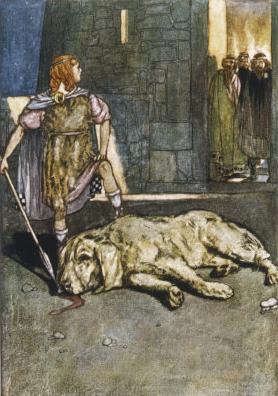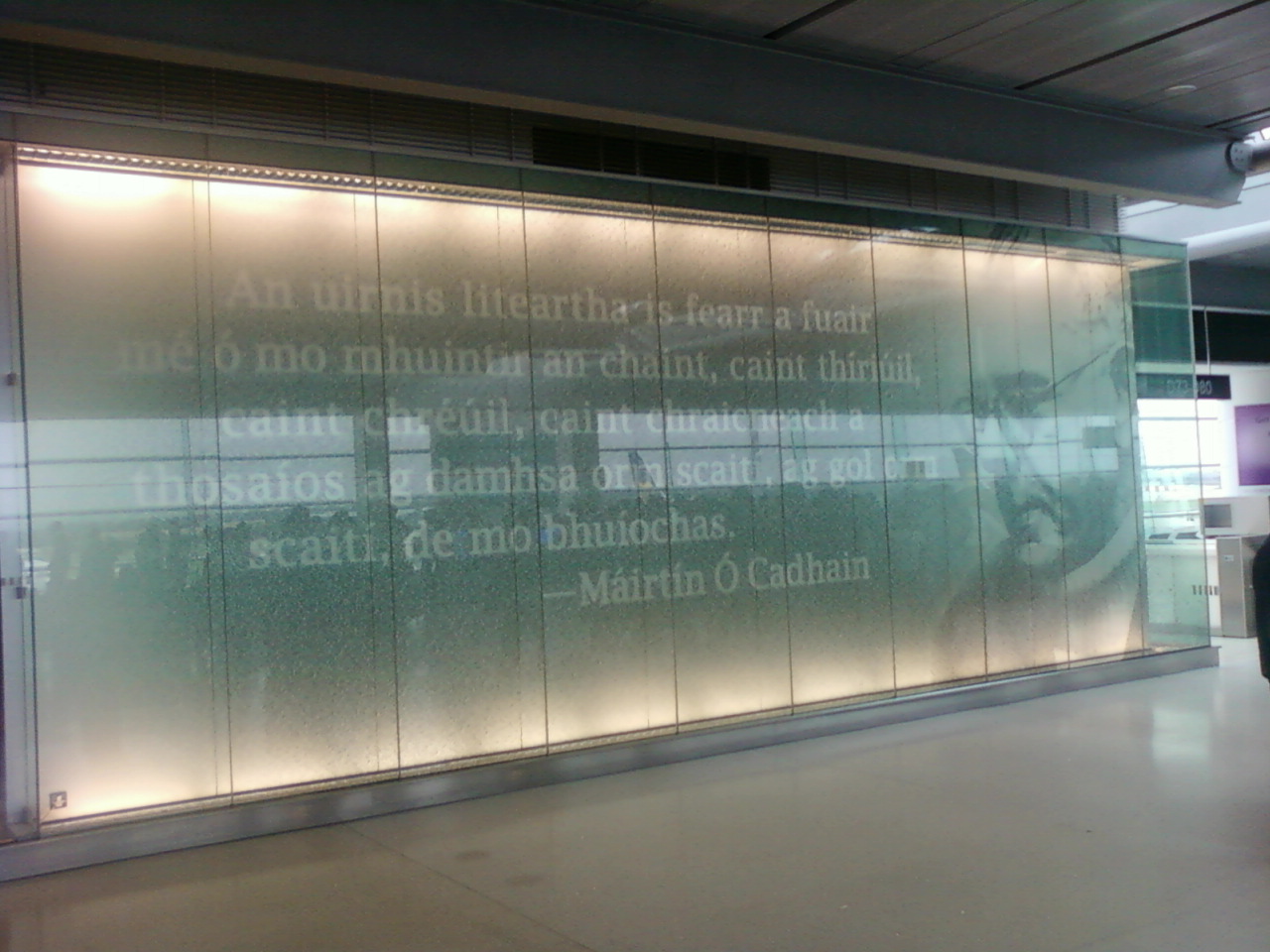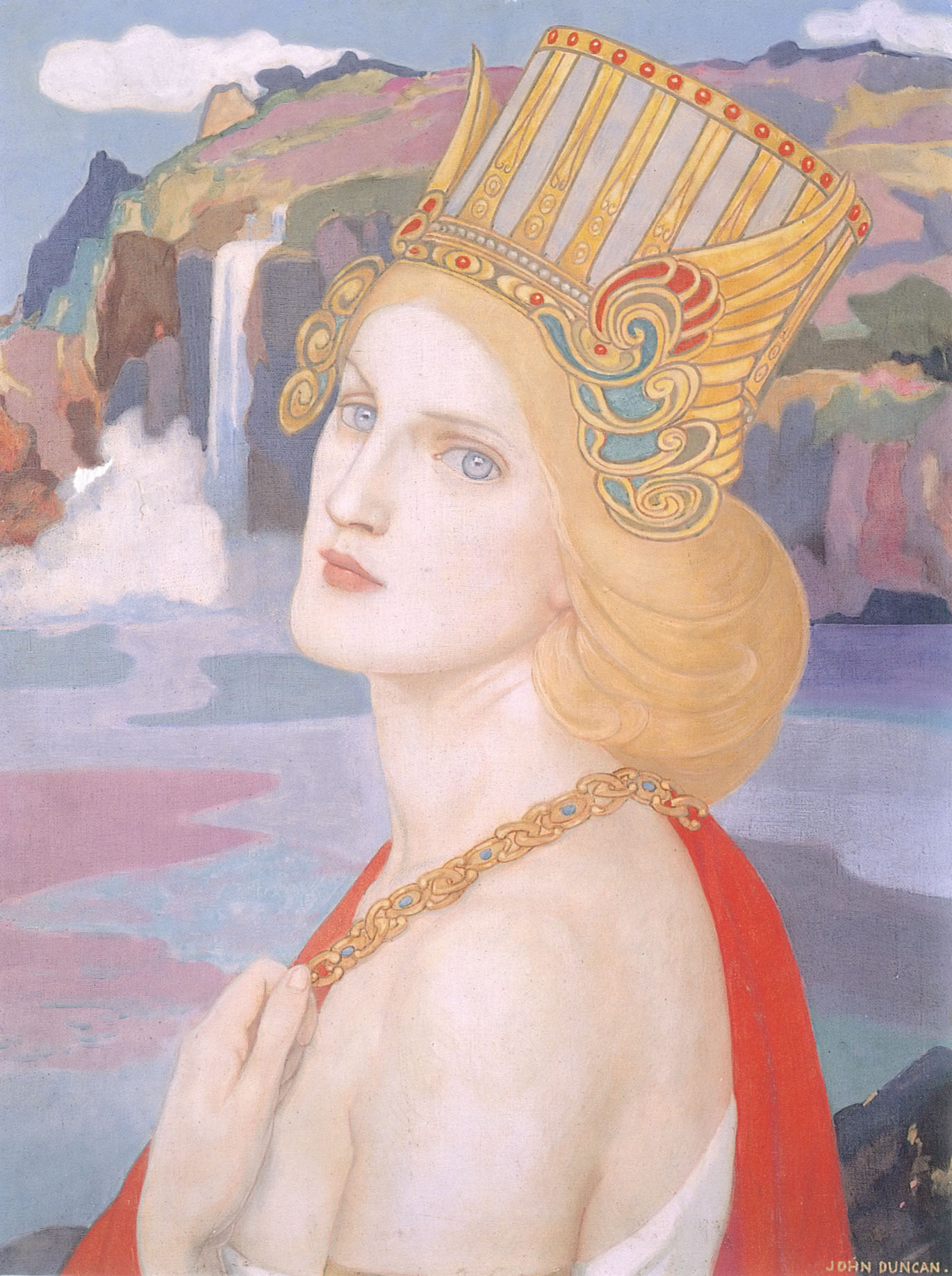|
Emer
Emer (), in modern Irish Eimhear or Éimhear (with variations including Eimer, Eimear and Éimear) and in Scottish Gaelic Eimhir, is the name of the daughter of Forgall Monach and the wife of the hero Cú Chulainn in the Ulster Cycle of Irish mythology. Legend ''Tochmarc Emire'' "The Wooing of Emer" The Ulstermen searched all over Ireland for a suitable wife for Cú Chulainn, but he would have none but Emer. He visited her at Forgall's house at Lusk, County Dublin, and wooed her by trading cryptic riddles with her. Emer would accept Cú Chulainn as a husband, but only when his deeds justified it. However, Forgall was opposed to the match. He came to Ulster in disguise and suggested that Cú Chulainn should train in arms with the renowned warrior-woman Scáthach in Scotland, hoping the ordeal would be too much for him and he would be killed. Cú Chulainn took up the challenge. He learned all the arts of war from Scáthach, and while he was there slept with her rival A ... [...More Info...] [...Related Items...] OR: [Wikipedia] [Google] [Baidu] |
Cú Chulainn
Cú Chulainn ( ), called the Hound of Ulster ( Irish: ''Cú Uladh''), is a warrior hero and demigod in the Ulster Cycle of Irish mythology, as well as in Scottish and Manx folklore. He is believed to be an incarnation of the Irish god Lugh, who is also his father. His mother is the mortal Deichtine, sister of king Conchobar mac Nessa. Born Sétanta, he gained his better-known name as a child, after killing Culann's fierce guard dog in self defence and offering to take its place until a replacement could be reared, hence he became the "Hound (''cú'') of Culann". He was trained in martial arts by Scáthach, who gave him the spear Gáe Bulg. It was prophesied that his great deeds would give him everlasting fame, but that his life would be short. At the age of seventeen he defends Ulster single-handedly against the armies of queen Medb of Connacht in the famous '' Táin Bó Cúailnge'' ("Cattle Raid of Cooley"). He is known for his terrifying battle frenzy (''ríastra ... [...More Info...] [...Related Items...] OR: [Wikipedia] [Google] [Baidu] |
Serglige Con Culainn
''Serglige Con Culainn'' ( en, The Sick-Bed of Cú Chulainn or The Wasting Sickness of Cúchulainn), also known as ''Oenét Emire'' ( en, The Only Jealousy of Emer) is a narrative from the Ulster Cycle of Irish mythology. It tells of a curse that fell upon the warrior Cú Chulainn as a result of his attacking otherworldly women, and his eventual recovery by reluctantly agreeing to give military aid to those he had wronged. His developing relationship with one of the Otherworldly women, Fand, occasions his wife Emer's "only jealousy." Literary and historical value In the assessment of Myles Dillon, ::The story of Cú Chulainn's visit to the Other World has a special claim on our attention, because of its long descriptions of the Irish Elysium, here called ''Mag Mell'' 'the Plain of Delights', and also for the quality of the poetry which makes up almost half of the text. In some of the poems one recognizes the tension and grace which were later so finely cultivated in the bardic ... [...More Info...] [...Related Items...] OR: [Wikipedia] [Google] [Baidu] |
Ulster Cycle
The Ulster Cycle ( ga, an Rúraíocht), formerly known as the Red Branch Cycle, is a body of medieval Irish heroic legends and sagas of the Ulaid. It is set far in the past, in what is now eastern Ulster and northern Leinster, particularly counties Armagh, Down and Louth. It focuses on the mythical Ulster king Conchobar mac Nessa and his court at Emain Macha, the hero Cú Chulainn, and their conflict with the Connachta and queen Medb. The longest and most important tale is the epic ''Táin Bó Cúailnge'' (Cattle Raid of Cooley). The Ulster Cycle is one of the four 'cycles' of Irish mythology and legend, along with the Mythological Cycle, the Fianna Cycle and the Kings' Cycle. Ulster Cycle stories The Ulster Cycle stories are set in and around the reign of King Conchobar mac Nessa, who rules the Ulaid from Emain Macha (now Navan Fort near Armagh). The most prominent hero of the cycle is Conchobar's nephew, Cú Chulainn. The Ulaid are most often in conflict with the Connachta, ... [...More Info...] [...Related Items...] OR: [Wikipedia] [Google] [Baidu] |
Máirtín Ó Cadhain
Máirtín Ó Cadhain (; 1906 – 18 October 1970) was one of the most prominent Irish language writers of the twentieth century. Perhaps best known for his 1949 novel ''Cré na Cille'', Ó Cadhain played a key role in reintroducing literary modernism into modern literature in Irish, where it had been dormant since the 1916 execution of Patrick Pearse. Politically, Ó Cadhain was an Irish republican and anti-clerical Marxist, who promoted the ''Athghabháil na hÉireann'' ("Re-Conquest of Ireland"), (meaning both decolonization and re-Gaelicisation). Ó Cadhain was also a member of the post-Civil War Irish Republican Army and was interned by the Irish Army in the Curragh Camp with Brendan Behan and many other IRA members during the Emergency. Literary career Born in Connemara, he became a schoolteacher but was dismissed due to his Irish Republican Army (IRA) membership. In the 1930s he served as an IRA recruiting officer, enlisting fellow writer Brendan Behan. During this perio ... [...More Info...] [...Related Items...] OR: [Wikipedia] [Google] [Baidu] |
Fand
Fand ("tear", "teardrop of beauty") or Fann ("weak, helpless person'") is an otherworldly woman in Irish mythology. The two forms of her name are not phonetic variants, but two different words of different meaning and the history of her name is debated.James MacKillop, ''A Dictionary of Celtic Mythology'' (Oxford: Oxford University Press, 1998), s.v. "Fand". Appearance in ''Serglige Con Culainn'' Fand appears most prominently in the Ulster Cycle tale, ''Serglige Con Culainn'' ("The Sickbed of Cúchulainn") as the daughter of Áed Abrat, sister of Lí Ban and one Angus, and wife of Manannán. She enters the story in the form of an otherworldly sea bird. In her sea bird form, she flies with a flock of enchanted birds, with each pair joined together by a silver chain. Fand, flying with her sister Lí Ban, stands out from the rest as they are connected by a gold chain. The hero Cúchulainn hurls stones at the seabirds, one of which passes through Fand's wing feathers. Later, Fa ... [...More Info...] [...Related Items...] OR: [Wikipedia] [Google] [Baidu] |
Ireland
Ireland ( ; ga, Éire ; Ulster Scots dialect, Ulster-Scots: ) is an island in the Atlantic Ocean, North Atlantic Ocean, in Northwestern Europe, north-western Europe. It is separated from Great Britain to its east by the North Channel (Great Britain and Ireland), North Channel, the Irish Sea, and St George's Channel. Ireland is the List of islands of the British Isles, second-largest island of the British Isles, the List of European islands by area, third-largest in Europe, and the List of islands by area, twentieth-largest on Earth. Geopolitically, Ireland is divided between the Republic of Ireland (officially Names of the Irish state, named Ireland), which covers five-sixths of the island, and Northern Ireland, which is part of the United Kingdom. As of 2022, the Irish population analysis, population of the entire island is just over 7 million, with 5.1 million living in the Republic of Ireland and 1.9 million in Northern Ireland, ranking it the List of European islan ... [...More Info...] [...Related Items...] OR: [Wikipedia] [Google] [Baidu] |
Augusta, Lady Gregory
Isabella Augusta, Lady Gregory (''née'' Persse; 15 March 1852 – 22 May 1932) was an Irish dramatist, folklorist and theatre manager. With William Butler Yeats and Edward Martyn, she co-founded the Irish Literary Theatre and the Abbey Theatre, and wrote numerous short works for both companies. Lady Gregory produced a number of books of retellings of stories taken from Irish mythology. Born into a class that identified closely with British rule, she turned against it. Her conversion to cultural nationalism, as evidenced by her writings, was emblematic of many of the political struggles to occur in Ireland during her lifetime. Lady Gregory is mainly remembered for her work behind the Irish Literary Revival. Her home at Coole Park in County Galway served as an important meeting place for leading Revival figures, and her early work as a member of the board of the Abbey was at least as important as her creative writings for that theatre's development. Lady Gregory's motto was tak ... [...More Info...] [...Related Items...] OR: [Wikipedia] [Google] [Baidu] |
Lusk, County Dublin
Lusk () is a small town in Fingal, Ireland. The town is located about north of Dublin city centre. Toponymy The name "Lusk" is said to date back to Saint MacCullin, who founded a church there c. 450. Oral tradition suggests MacCullin may have either lived in or been buried in a cave and that the name "Lusk" derives from an old Irish word ''Lusca'' meaning 'cave' or 'underground chamber'. MacCullin died in c. 497 and his feast day was 6 September. The area was known as Bregia in pre-Christian times and was said to have been the birthplace of Cú Chulainn's wife, Emer in Irish mythology. History The settlement of Lusk has been associated with St. MacCullin since c. AD 450. The place also had associations with St. Maur, who nowadays connects with Rush (RosEo). The ruins of St. Maur's original church, or more likely its later replacement, are at the top of Whitestown hill, firmly in the parish of Rush. Lusk was plundered and burned several times in the 8th and 9th centuries by ... [...More Info...] [...Related Items...] OR: [Wikipedia] [Google] [Baidu] |
Scáthach
Scáthach () or Sgàthach ( gd, Sgàthach an Eilean Sgitheanach) is a figure in the Ulster Cycle of Irish mythology. She is a legendary Scottish warrior woman and martial arts teacher who trains the legendary Ulster hero Cú Chulainn in the arts of combat. Texts describe her homeland as Scotland (''Alpeach''); she is especially associated with the Isle of Skye, where her residence '' Dún Scáith'' ("Fortress of Shadows") stands. She is called "the Shadow" and "Warrior Maid" and is the rival and sister of Aífe, both of whom are daughters of Árd-Greimne of Lethra. Appearances Scáthach's instruction of the young hero Cú Chulainn notably appears in '' Tochmarc Emire'' (''The Wooing of Emer''), an early Irish foretale to the great epic ''Táin Bó Cúailnge''. Here, Cú Chulainn is honour-bound to perform a number of tasks before he is found worthy to marry his beloved Emer, daughter of the chieftain Forgall Monach. The tale survives in two recensions: a short version written ... [...More Info...] [...Related Items...] OR: [Wikipedia] [Google] [Baidu] |
Connla
Connla or Conlaoch is a character in the Ulster Cycle of Irish mythology, the son of the Ulster champion Cú Chulainn and the Scottish warrior woman Aífe. He was raised alone by his mother in Scotland. He appears in the story '' Aided Óenfhir Aífe'' (''The Tragic Death of Aífe's Only Son''), a pre-tale to the great epic ''Táin Bó Cúailnge''. Story Connla was the son of Cú Chulainn and Aífe Ardgeimm, identified in this text as the sister of his teacher Scáthach. Leaving to return to Ireland, Cú Chulainn gives Aífe a token, a gold thumb-ring, telling her that when his son is old enough to wear it, he should be sent to Ireland. However, he imposes three '' geasa'' or prohibitions on him. Connla cannot turn back once he starts his journey, he must not refuse a challenge, and must never tell anyone his name. Connla comes ashore at Tracht Eisi, where he practises his martial feats. The Ulaid, observing these, recognise his skill as a warrior, and Conchobar observes tha ... [...More Info...] [...Related Items...] OR: [Wikipedia] [Google] [Baidu] |
Aífe
(Old Irish), spelled () in Modern Irish, is a character from the Ulster Cycle of Irish mythology. She appears in the sagas ''Tochmarc Emire'' ("the wooing of Emer") and '' Aided Óenfhir Aífe'' ("the death of Aífe's only son"). In ''Tochmarc Emire'' she lives east of a land called ''Alpi'', usually understood to mean Alba (Scotland), where she is at war with a rival woman warrior, Scáthach.Kuno Meyer (ed.)"Tochmarc Emire la Coinculaind (Harleian 5280, fo. 27a)" ''Zeitschrift für celtische Philologie'', Halle an der Saale, Max Niemeyer volume 3, 1901, pp. 229–263. In ''Aided Óenfhir Aífe'' she lives in Letha (the Armorican peninsula), and is Scáthach's sister as well as rival – they are both daughters of Árd-Greimne of Lethra.Kuno Meyer (ed. & trans.), "The Death of Conla", ''Ériu'' 1, 1904, pp. 113–121. Appearances In ''Tochmarc Emire'' the Ulaid hero Cú Chulainn has come to train in arms under Scáthach when a battle breaks against Aífe. Scáthach, fearful of ... [...More Info...] [...Related Items...] OR: [Wikipedia] [Google] [Baidu] |
Womanhood
A woman is an adult female human. Prior to adulthood, a female human is referred to as a girl (a female child or adolescent). The plural ''women'' is sometimes used in certain phrases such as "women's rights" to denote female humans regardless of age. Typically, women inherit a pair of X chromosomes, one from each parent, and are capable of pregnancy and giving birth from puberty until menopause. More generally, sex differentiation of the female fetus is governed by the lack of a present, or functioning, SRY-gene on either one of the respective sex chromosomes. Female anatomy is distinguished from male anatomy by the female reproductive system, which includes the ovaries, fallopian tubes, uterus, vagina, and vulva. A fully developed woman generally has a wider pelvis, broader hips, and larger breasts than an adult man. Women have significantly less facial and other body hair, have a higher body fat composition, and are on average shorter and less muscular than men. T ... [...More Info...] [...Related Items...] OR: [Wikipedia] [Google] [Baidu] |






.jpg)

.jpg)